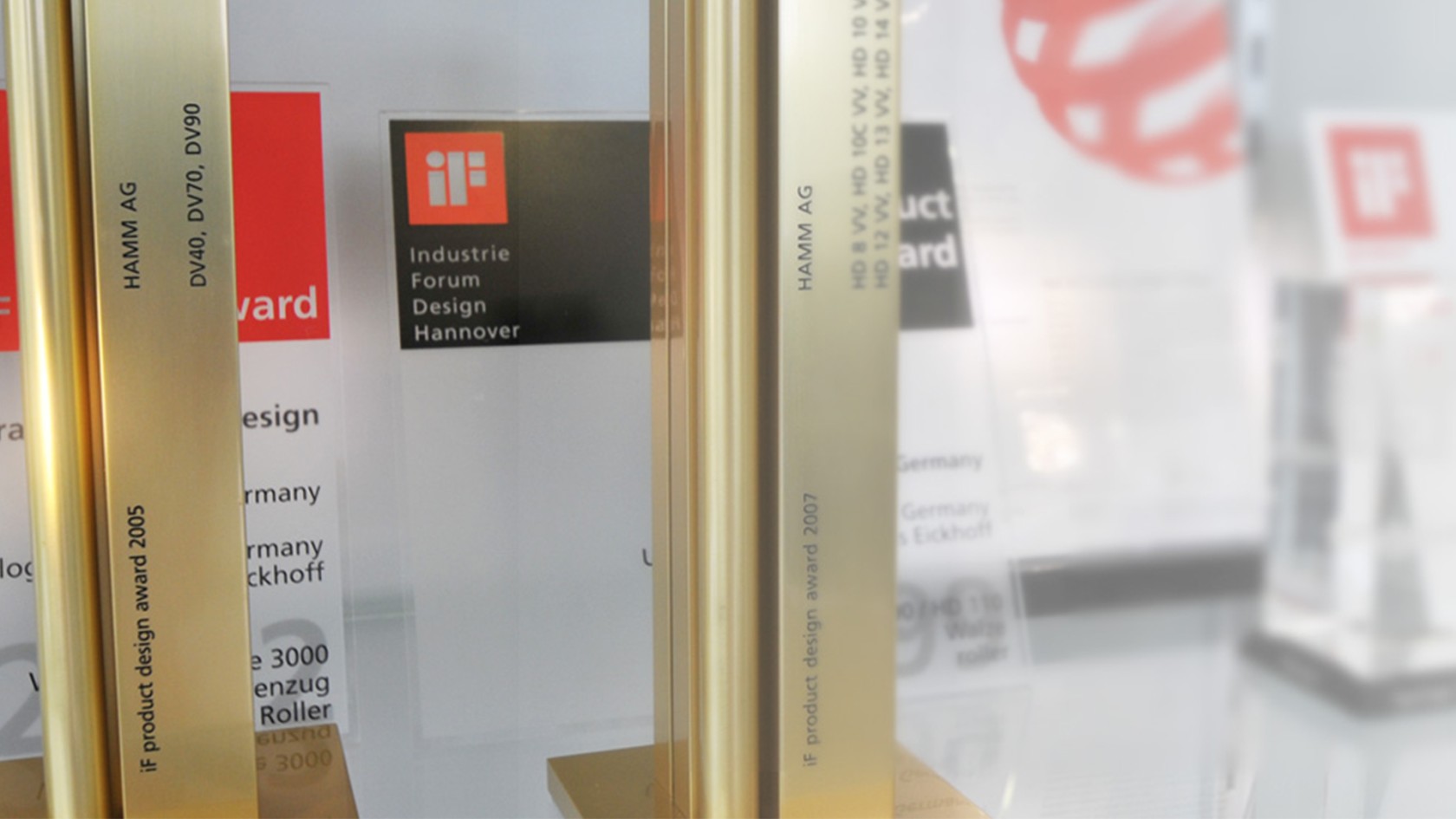

Design and ergonomics – integrated into the development process
Technical solutions – however ingenious they may be – will only succeed if they are user-friendly. HAMM recognised this fact at a very early stage. This is why product designers have been involved in the development process since the 1990s.
Intensive dialogue between designers and engineers results in rollers that are not only technically sophisticated, but also user-friendly, comfortable, ergonomically optimised and aesthetically appealing. As a trendsetter, in 1996 HAMM became the first construction machine manufacturer to win a design prize. Since then, it has gained more than 30 other awards for successful design – among them the world-renowned Red Dot Design Award and the IF Design Award.
The following review lists a number of different historic key moments in the design and styling of HAMM machines.
The 1950s: The eagle has landed: A powerful stimulus for the HAMM branding
The eagle has landed: Gentscho Gentscheff, an important sales partner of HAMM, lends HAMM its wings in the 1950s, giving an important stimulus to the image of the brand and the machines. In the 1950s, the sales and distribution partner Gentscho Gentscheff lends HAMM an element that is to accompany the brand over decades to come and make it unmistakable: The spread eagle. In the corporate logo, they have not only lent HAMM wings for many years, but also the familiar appearance.
Up to the 1980s: Form follows function: The principle of "additive expansion"
Form follows function: Until well into the 1980s, there was no really well-thought-out design principle in the construction of rollers or other construction machinery. Until well into the 1980s, the principle applied by HAMM was "additive expansion". What this means in practice is that the construction of rollers was not based on a well-thought-out, consistent design principle. Although the resulting machines totally satisfied the purpose for which they were intended, in visual terms they were still far removed from the standards HAMM sets for its products today. Nevertheless, it should be noted that various styling elements were integrated into many HAMM machines without consciously trying, even well before the 1980s.
Outstanding industrial design
The design pioneer at HAMM was Umberto Draghi. Under his leadership, HAMM's collaboration with professional industrial designers began. The look of HAMM road rollers today can be traced back to Umberto Draghi’s design initiative in the late 1980s. Umberto Draghi was the main shareholder in HAMM from 1984. He instigated the intensive focus on industrial design in the company. The result: Since the 1990s, HAMM rollers have regularly received renowned design prizes such as the prestigious Red Dot Award and the iF Design Award.
New materials
The stuff of which innovations are made: With the 3000 series compactors, HAMM employs new materials in roller construction for the first time, opening up numerous new styling opportunities. The introduction of new materials in roller construction satisfies an important prerequisite for the advances in the design of HAMM rollers. Used for the first time in the construction of the 3000 series, these materials open up new, innovative possibilities in roller design. With the styling flexibility gained, HAMM is able to develop a trendsetting design language that also visualises HAMM's technical innovation capability and conveys it to the outside world.
The workplace well-being factor
HAMM road rollers also stand out because of their interior comfort and design features. Operator comfort and ergonomics have played a key role in the development of HAMM rollers for many years. Restricted vision, frustratingly small components, cold materials and cool colours – for a long time, drivers’ cabs in road rollers were not places in which to feel at home. HAMM's goal is to make the roller driver’s workplace more pleasant as an integral part of the design process. New, larger windows, for example, help to make a positive change in ambience and spaciousness, providing a clear overview rather than porthole vision. Instead of metal and tinplate, textile and plastic finishes make the cab interior more inviting. Operator health and working comfort have not been neglected either thanks to greater focus on the development of the controls in accordance with ergonomic aspects.
The latest example of this is the intuitive Easy Drive operating concept, presented for the first time at bauma 2016. It is an important tool to ensure that drivers can react quickly and correctly without a great deal of prior knowledge. This is made possible thanks to a few, intelligently arranged switches, good visibility on the driver's platform and short learning and familiarisation times. In addition to the DV+ series, the Easy Drive operating concept has also been successively integrated into other series such as the HD+ series and the H series, and has already won several design awards in 2016.
